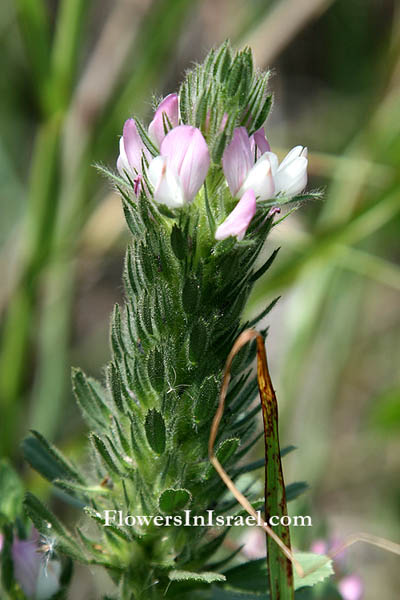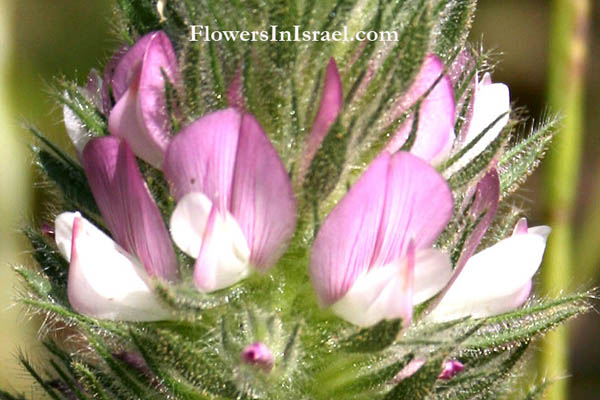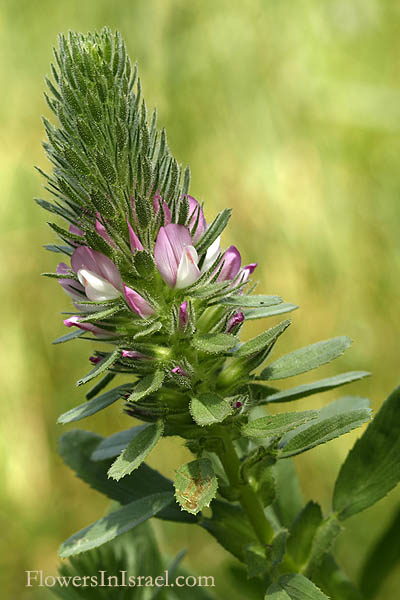Hebrew: שברק משובל, Arabic: الشبرق الثعلبي
| Scientific name: | Ononis alopecuroides L. | |
| Common name: | Foxtail Rest Harrow | |
| Hebrew name: | שברק משובל | |
| Arabic name: | الشبرق الثعلبي, alshabriq althaelabiu | |
| Family: | Papilionaceae, פרפרניים |

|
| Life form: | Annual | |
| Stems: | 10-65 cm; nearly glabrous below, densely hairy and glandular above | |
| Leaves: | Alternate, entire | |
| Inflorescence: | Dense terminal racemes, elongating slightly after anthesis | |
| Flowers: | Corolla 13-16mm; Pink | |
| Fruits / pods: | Legume | |
| Flowering Period: | April, May | |
| Habitat: | Humid habitats | |
| Distribution: | Mediterranean Woodlands and Shrublands, Montane vegetation of Mt. Hermon | |
| Chorotype: | Mediterranean | |
| Summer shedding: | Ephemeral |

Derivation of the botanical name: Ononis, (Theophrastus) is from the Greek onos, meaning "ass" (because they are said especially to like it), and the classical Greek name used by Pliny for the rest-harrow. alopecuroides, alopecuros, αλωπεκουροϛ (αλωπεξ ουρα) Theophrastus: "fox tail, fox brush"; -oides, -οειδεϛ, "like, resemble"; like the genus Alopecurus (foxtail). The hebrew word: shabrak, שברק, borrowed from Arabic Al-Shabraq, Al-Shibraq, ononis.

Location: Netanya, the Dora rain pool |